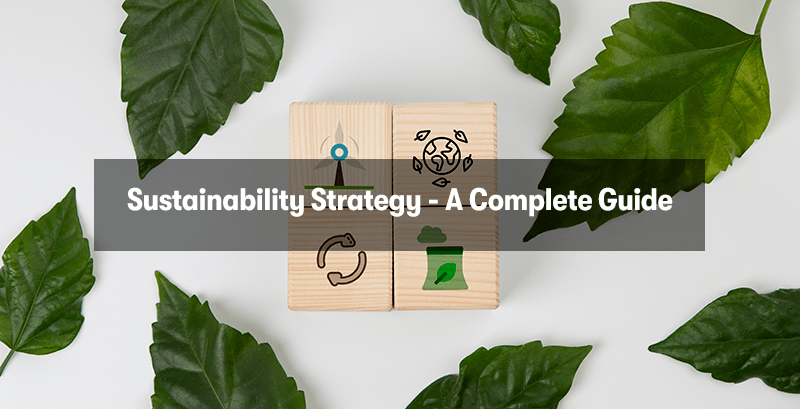Sustainability Strategy - A Complete Guide
Welcome to our exploration of Sustainability Strategy, a concept that has become a cornerstone in the modern business landscape. In a world increasingly aware of environmental and social challenges, the Sustainability Strategy stands as a beacon of innovation and responsibility. This strategic approach goes beyond mere compliance, weaving environmental stewardship, social equity, and economic viability into the very fabric of organisational operations.
As we delve into this topic, we uncover how companies across the globe are redefining success by integrating sustainable practices into their core business models.
Join us in discovering how Sustainability Strategy is not just shaping businesses, but also driving positive change in our global community.
What is a Sustainability Strategy?
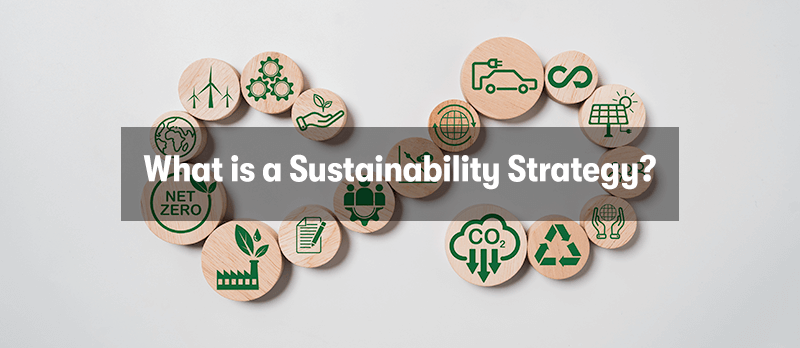
A Sustainability Strategy refers to a plan or approach adopted by an organisation, community, or individual to promote environmental sustainability, economic viability, and social equity in the short and long term. This strategy encompasses various dimensions, such as:
Environmental Sustainability
Efforts to reduce environmental impact, such as minimising waste, conserving natural resources, reducing greenhouse gas emissions, and promoting biodiversity.
Economic Sustainability
Ensuring that the economic actions are viable and beneficial in the long term, focusing on responsible resource management, efficient operations, and innovation that contributes to a sustainable economy.
Social Sustainability
Promoting fair labour practices, community engagement, inclusivity, and ensuring that the needs of current and future generations are met without compromising cultural and societal values.
Corporate Governance and Ethics
Establishing transparent, ethical, and accountable practices in decision-making and operations.
Stakeholder Engagement
The sustainability journey involves various stakeholders, including employees, customers, suppliers, communities, and investors.
Integration with Business Strategy
Aligning sustainability goals with the overall business strategy, ensuring that sustainable practices are embedded in every aspect of the organisation's operations.
Measurement and Reporting
Developing metrics to measure sustainability performance and regularly reporting progress towards sustainability goals.
A well-defined sustainability strategy helps organisations contribute positively to the planet and society and achieve long-term business success by reducing risks, driving innovation, enhancing brand reputation, and building trust among stakeholders.
Why is a Sustainability Strategy Important for Businesses?
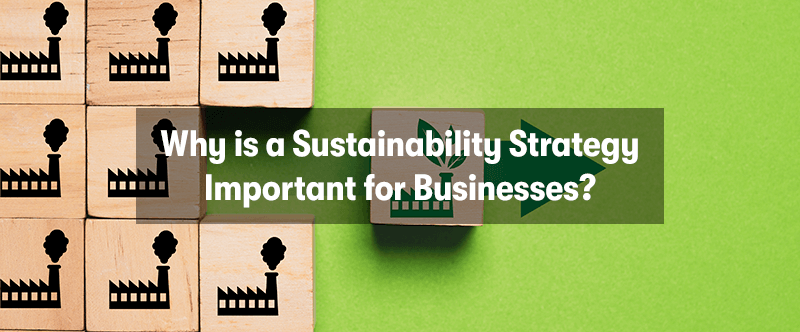
A Sustainability Strategy is crucial for businesses for several reasons, encompassing environmental, social, economic, and strategic benefits:
Risk Management
Environmental and social risks, such as climate change, resource scarcity, and labour issues, can significantly impact a business's operations and financial performance. A sustainability strategy helps identify and mitigate these risks.
Regulatory Compliance
With increasing environmental regulations and social standards, a sustainability strategy ensures that businesses comply with current laws and are prepared for future regulatory changes.
Cost Reduction
Sustainability often involves efficient resource use, waste reduction, and energy efficiency, leading to significant cost savings.
Competitive Advantage
Businesses that adopt sustainable practices can differentiate themselves from competitors, appealing to consumers and business partners who prioritise environmental and social responsibility.
Investor Attraction
Investors are increasingly considering sustainability as a factor in their investment decisions. Companies with strong sustainability strategies may attract more investment and achieve better financial performance.
Brand Reputation and Customer Loyalty
Demonstrating commitment to sustainability can enhance a company's brand reputation, building trust and loyalty among customers who are increasingly conscious of their purchases' environmental and social impact.
Innovation and Long-Term Growth
Sustainability challenges can drive innovation, leading to new products, services, and business models that offer long-term growth opportunities.
Employee Engagement and Attraction
A strong sustainability ethic can improve employee morale, attract talent, and increase productivity as employees increasingly seek to work for companies that align with their values.
Market Demand and Access
Some markets and clients require suppliers to adhere to specific sustainability standards, so having a sustainability strategy can open up new market opportunities.
Social License to Operate
Demonstrating a commitment to sustainability can improve relationships with the communities in which a company operates, securing their 'social license to operate', which is essential for smooth business operations.
In summary, a Sustainability Strategy is not just about corporate responsibility; it's a comprehensive approach that drives innovation, market competitiveness, financial performance, and long-term viability while contributing positively to society and the environment.
What is a Sustainability Culture?
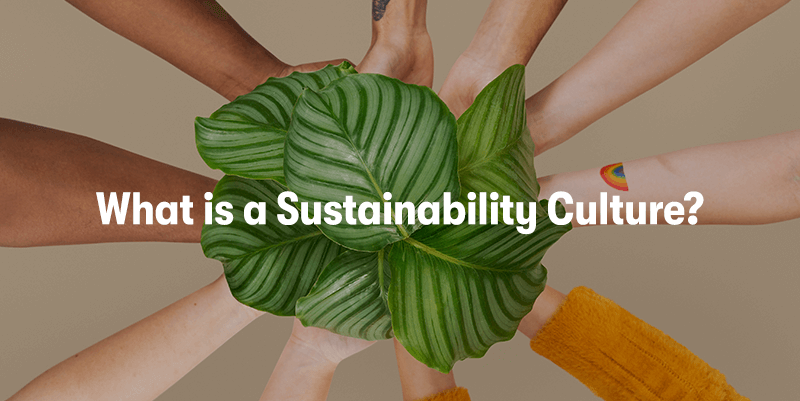
A Sustainability Culture refers to an organisation's values, beliefs, practices, and behaviours that prioritise and integrate sustainable practices into everyday business operations and decision-making processes. It goes beyond just implementing a sustainability strategy; it fosters a mindset and ethos where sustainability is ingrained in the organisation's identity and is a key driver of all activities. Key aspects of a sustainability culture include:
Shared Values and Beliefs
A common understanding and commitment among all members of the organisation regarding the importance of sustainability for both ethical and business reasons.
Leadership Commitment
Leaders play a crucial role in shaping and promoting a sustainability culture by setting an example, providing direction, and embedding sustainability principles into the core business strategy.
Employee Engagement and Empowerment
Encourage employees at all levels to contribute to sustainability initiatives and recognise their efforts. This involves providing employees with education, resources, and opportunities to engage in sustainable practices.
Stakeholder Involvement
Actively involving various stakeholders (e.g., customers, suppliers, community members) in sustainability efforts and considering their interests and feedback in decision-making processes.
Integrated Practices
Embedding sustainability into every aspect of the business, from product design and manufacturing to marketing and supply chain management.
Innovation and Adaptability
Fostering a culture that encourages innovative approaches to sustainability challenges and is adaptable to changing environmental and social landscapes.
Transparent Communication
Regularly communicating sustainability goals, achievements, and challenges both internally and externally, promoting transparency and accountability.
Continuous Learning and Improvement
Committing to ongoing education and improvement regarding sustainability, staying informed about new developments and best practices.
Reward and Recognition Systems
Aligning reward and recognition systems with sustainability achievements to incentivise sustainable behaviour.
Ethical Standards
Upholding high ethical standards in all aspects of the business ensures that sustainability is not just a policy but a fundamental business principle.
A strong sustainability culture contributes to environmental and social well-being and enhances organisational resilience, innovation, employee satisfaction, and long-term profitability. It reflects a deep-rooted recognition that the long-term success of an organisation is intimately connected to its relationship with the natural environment, society, and a broader range of stakeholders.
What are the Benefits of Sustainability Strategies?
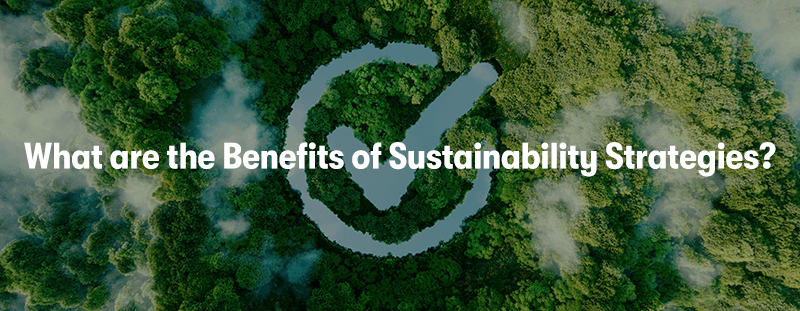
The benefits of implementing Sustainability Strategies in businesses and organisations are multifaceted and substantial, impacting various aspects, including environmental, economic, social, and governance dimensions. Here are some of the key benefits:
Environmental Benefits
Reduced Carbon Footprint: Lower greenhouse gas emissions through energy-efficient practices and renewable energy sources.
Conservation of Resources: Efficient use of water, energy, and other natural resources, minimising waste and promoting recycling and reuse.
Biodiversity Protection: Practices that protect ecosystems and biodiversity include sustainable sourcing and habitat conservation.
Economic Benefits
Cost Savings: Reduction in energy, water, and material costs through efficiency improvements.
Increased Competitiveness: Enhanced brand value and competitive advantage in markets where consumers value sustainability.
Innovation and New Markets: Development of new sustainable products and services, opening up new markets and customer segments.
Risk Management: Mitigating risks associated with resource scarcity, climate change, and fluctuating energy costs.
Social Benefits
Employee Attraction and Retention: Companies with strong sustainability practices often attract and retain talented employees who seek purposeful work.
Improved Public Image: Enhanced reputation and brand loyalty among consumers and the broader community.
Community Benefits: Contributing positively to the communities in which the business operates, often leading to improved social license to operate.
Governance Benefits
Investor Appeal: Increasing interest from investors in companies with strong sustainability credentials.
Regulatory Compliance: Proactively adapting to environmental regulations and standards.
Long-term Business Viability: Ensuring the long-term sustainability of the business by adapting to changing environmental and social realities.
Strategic Benefits
Market Leadership: Establishing the company as a leader in sustainability can position it ahead of trends and regulatory changes.
Resilience and Adaptability: Enhancing the ability to respond and adapt to external changes and disruptions.
Innovation Benefits
Driving Innovation: Sustainability challenges often drive product, service, and business model innovation.
Cross-Sector Collaboration: Opportunities for collaboration with other businesses, government, and NGOs to address sustainability challenges.
Overall, sustainability strategies align business operations with the broader societal and environmental context, ensuring long-term viability and success while contributing positively to the planet and society.
How to Implement a Sustainability Strategy for Your Business

Implementing a sustainability strategy for your business involves a series of structured steps, each contributing to effectively integrating sustainability into your business operations and culture. Here is a step-by-step guide:
Assess Current Sustainability Performance
Conduct a sustainability audit to evaluate your current environmental impact, social practices, and governance structures.
Identify areas of strength and areas needing improvement.
Define Clear Sustainability Goals and Objectives
Set specific, measurable, achievable, relevant, and time-bound (SMART) sustainability goals aligned with your business's mission and values.
Consider both short-term and long-term objectives.
Engage Stakeholders
Involve employees, customers, suppliers, investors, and the local community in developing the sustainability strategy.
Understand their concerns, expectations, and suggestions.
Develop a Detailed Action Plan
Outline specific actions to achieve your sustainability goals.
Assign responsibilities and deadlines for each action.
Consider resource allocation, including budget, personnel, and technology.
Integrate Sustainability into Corporate Governance
Ensure that sustainability is a part of the decision-making process at all levels of the organisation.
Create or empower a sustainability committee or officer.
Implement Sustainability Practices
Roll out initiatives focusing on key areas like energy efficiency, waste reduction, sustainable sourcing, and ethical labour practices.
Encourage sustainable practices among employees and throughout the supply chain.
Monitor and Measure progress
Establish key performance indicators (KPIs) to track progress against your goals.
Regularly review performance and adjust strategies as necessary.
Report and Communicate
Transparently communicate your sustainability efforts and progress to stakeholders.
Use sustainability reporting frameworks like GRI (Global Reporting Initiative) or the Sustainable Development Goals (SDGs) for guidance.
Educate and Train Employees
Provide training and resources to educate your workforce about sustainability practices and their importance.
Encourage employee engagement and innovation in sustainability.
Promote a Culture of Sustainability
Foster a workplace culture where sustainability is valued and encouraged.
Recognise and reward sustainable practices and achievements.
Review and Revise Strategy Regularly
Continuously assess the effectiveness of your sustainability strategy.
Be adaptable and willing to make changes based on new information, technologies, or changing stakeholder expectations.
Collaborate and Learn
Collaborate with other businesses, non-profits, or governmental organisations to learn and share best practices.
Stay informed about new developments and innovations in sustainability.
Implementing a sustainability strategy is an ongoing process that requires commitment, innovation, and adaptability. It's not just about reducing negative impacts but also about creating positive value for society, the environment, and the economy.
Sustainability Strategy Examples
Certainly, here are some examples of sustainability strategies implemented by businesses across various industries:
Renewable Energy Transition
Companies like Google and Apple have committed to powering all of their operations with renewable energy, investing in solar and wind energy projects.
Sustainable Supply Chains
Retail giants like IKEA and Walmart have implemented strategies to ensure sustainable sourcing of materials. IKEA, for instance, aims to use only renewable or recycled materials in its products.
Zero Waste and Circular Economy
The outdoor clothing company Patagonia emphasises repairing, reusing, and recycling products. Their Worn Wear program encourages customers to return used items for repair or recycling.
Water Conservation and Management
Beverage companies like Coca-Cola have developed strategies to improve water efficiency in their production processes and replenish water in communities affected by water usage.
Green Building and Energy Efficiency
Many corporations are investing in green building certifications like LEED for their offices and facilities. Salesforce, for example, has committed to achieving net-zero carbon emissions in its buildings.
Eco-friendly Packaging
Unilever has pledged to make all of its plastic packaging reusable, recyclable, or compostable by 2025, drastically reducing its use of single-use plastics.
Sustainable Transportation
Logistics companies, such as DHL and FedEx, are incorporating electric and hybrid vehicles into their fleets to reduce carbon emissions from transportation.
Employee Engagement and Community Initiatives
Starbucks implements a comprehensive sustainability strategy, including employee engagement in community service and environmental stewardship programs.
Sustainable Product Development
Adidas, through its Futurecraft Loop initiative, is working on creating a line of shoes that are fully recyclable, closing the loop in the product lifecycle.
Biodiversity and Conservation Efforts
Companies like L'Oréal have committed to sourcing ingredients sustainably to avoid deforestation and promote biodiversity.
Carbon Footprint Reduction
Microsoft has pledged to be carbon negative by 2030, meaning they plan to remove more carbon from the atmosphere than they emit.
Social Responsibility and Fair Labour Practices
Ben & Jerry's focuses not just on environmental sustainability but also on social issues, including fair trade and responsible labour practices in its supply chain.
These examples illustrate how sustainability strategies vary greatly depending on the industry and specific company goals. The key is to identify the areas where a company can make the most significant impact and set ambitious yet achievable targets.
What is Digital Sustainability?
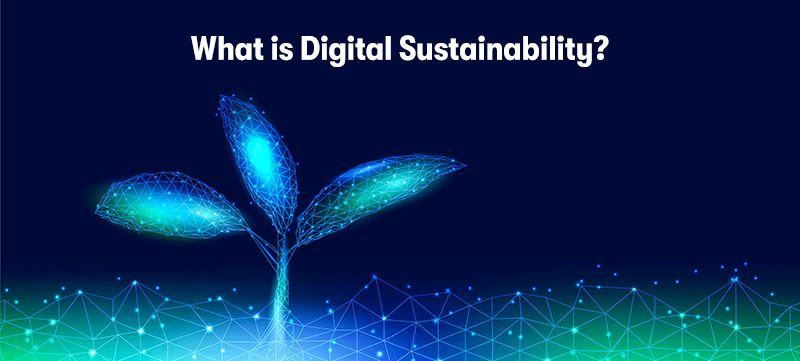
Digital Sustainability refers to designing, implementing, and using digital technologies to support and enhance environmental, social, and economic sustainability. This concept is becoming increasingly important as the global reliance on digital technology grows, along with its environmental footprint and societal impact. Digital sustainability encompasses several key aspects:
Energy Efficiency of Digital Systems
Minimising the energy consumption of data centres, servers, network infrastructure, and end-user devices. This includes using energy-efficient hardware, optimising software for energy efficiency, and utilising renewable energy sources for power.
Responsible E-Waste Management
Proper disposal and recycling of electronic waste to prevent environmental pollution and recover valuable materials. It also involves designing products for easier recycling at the end of their life cycle.
Sustainable Software Engineering
Developing software in a way that requires less computational power and, consequently, consumes less energy. This includes efficient coding practices, optimising algorithms, and using cloud computing more effectively.
Reducing Digital Divide
Ensuring equitable access to digital technologies and internet connectivity. This is important for social sustainability, as it enables broader participation in the digital economy and society.
Data Privacy and Security
Protecting the privacy and security of users is a key aspect of social sustainability in the digital realm. Ethical data handling and transparent data practices contribute to trust and stability in digital ecosystems.
Sustainable Business Models in the Digital Economy
Creating sustainable digital business models, such as those promoting the sharing economy, can lead to more efficient resource use and less waste.
Green ICT (Information and Communication Technology)
Implementation of ICT strategies that focus on reducing the carbon footprint of digital infrastructure and promoting sustainability in the way information technologies are used and managed.
Digital Tools for Sustainability
Leveraging digital technologies to support sustainability goals in other sectors, such as using big data and AI for climate modelling, energy management, or monitoring biodiversity.
Sustainable Work Practices
Promoting remote work and virtual meetings to reduce the need for travel, thereby lowering carbon emissions associated with transportation.
Lifecycle Thinking in Technology Development
Considering the environmental and social impact of technology products throughout their entire lifecycle, from design and manufacturing to use and end-of-life disposal.
Digital sustainability requires a holistic approach, integrating considerations of environmental impact, social equity, and economic viability into the development, deployment, and usage of digital technologies. As digital technology evolves rapidly, its role in shaping a sustainable future becomes increasingly significant.
Where Can You Learn More About Digital Sustainability?
At Purple Griffon, we offer an ITIL® 4 Specialist Sustainability in Digital & IT (SDIT) training course. This course will help you to:
- Understand how to use the ITIL guiding principles to deliver value by creating sustainable digitally enabled products and services.
- Effectively address VUCA challenges through sustainable strategies, procurement, products and practices.
- Obtain a practical grounding in the key principles of sustainability.
- Conduct a complete cost-benefit analysis identifying potential risks and opportunities using best practice guidance.
Final Notes on Sustainability Strategies
In conclusion, this comprehensive exploration has underscored the multifaceted nature of sustainability in the business world. From defining the essence of a Sustainability Strategy and its pivotal role in modern businesses to discussing the cultural shift towards sustainability, we've delved into various strategies and their benefits.
We've also navigated through the practical steps of implementing a sustainability strategy, highlighted by real-world examples, and ventured into the emerging realm of Digital Sustainability. This journey reflects a growing recognition that sustainability is not just an ethical imperative but a strategic and innovative driver of long-term success.
Businesses and individuals alike are encouraged to embrace this shift, acknowledging that the path to a sustainable future is both a collective responsibility and an opportunity for growth and innovation.


